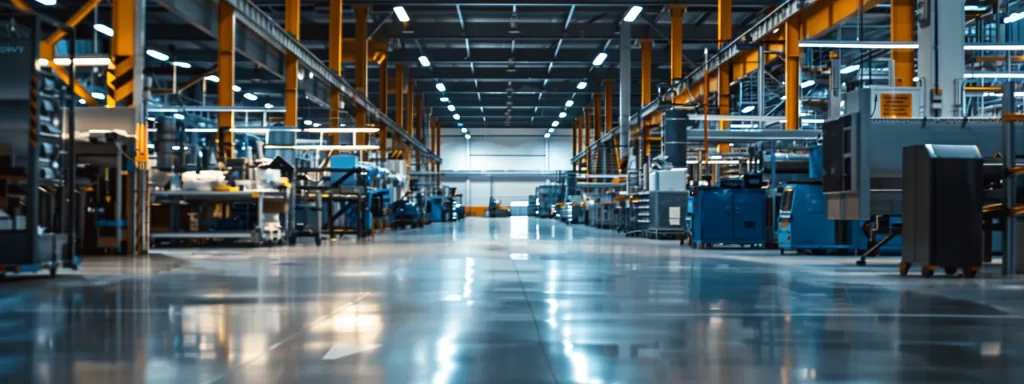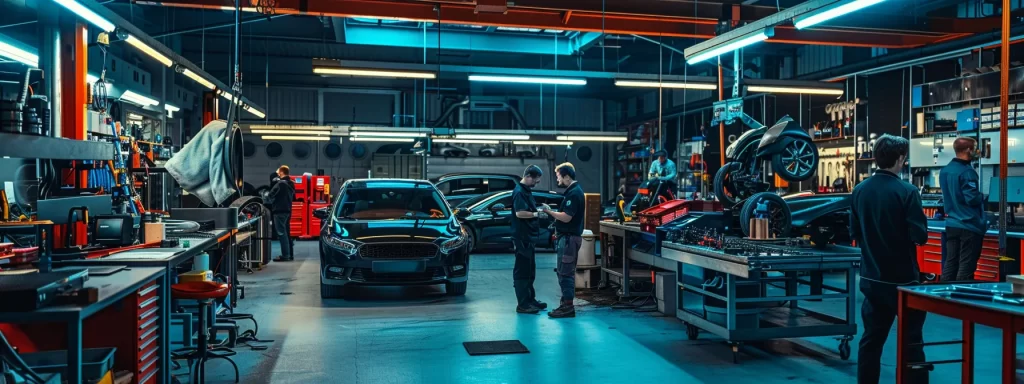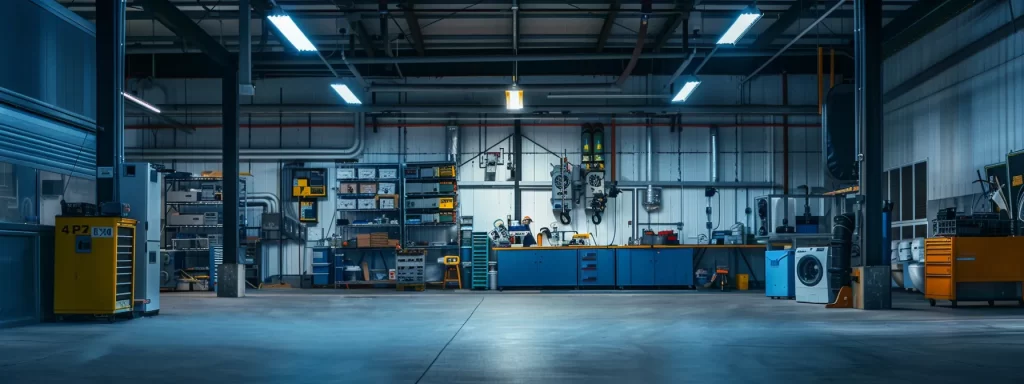Table Of Contents:
- Streamline Operations With Reliable Maintenance Service
- Optimize Efficiency With Core Maintenance Strategies
- Reduce Downtime Through Proactive Service Solutions
- Enhance Productivity With Streamlined Processes
- Invest in Quality Maintenance Tools and Resources
- Understand the Benefits of Preventive Maintenance Services
- Conclusion
Streamline Operations With Reliable Maintenance Service
In the manufacturing sector, unexpected equipment failures can lead to significant downtime and lost revenue. Streamlining operations with reliable maintenance service is essential for minimizing these risks. This blog post will discuss key core maintenance strategies, the importance of proactive service solutions, and the benefits of preventive maintenance services. By implementing these practices, facility managers can enhance productivity, improve airflow in their spaces, and rely on quality tools and resources. This content aims to address the common pain point of costly disruptions and provide actionable insights for smoother operations.
Optimize Efficiency With Core Maintenance Strategies

To optimize efficiency in operations, it is essential to identify key areas for operational improvement, implement scheduled maintenance checks, and utilize data-driven decision-making. Effective training for staff on best maintenance practices ensures a well-informed team. Additionally, leveraging technology for maintenance tracking and setting realistic maintenance goals and KPIs supports consistent customer service while addressing facility management and sanitation needs.
Identify Key Areas for Operational Improvement
Identifying key areas for operational improvement begins with a thorough assessment of existing systems and processes. For instance, ensuring the pilot light in heating systems is functioning properly can prevent unnecessary energy loss, while regular checks on brake pads in vehicles can enhance safety and performance. Additionally, addressing issues like dust and debris accumulation not only improves operational efficiency but also supports a healthier work environment, making it essential for businesses to work with a qualified electrician or maintenance professional to establish a proactive maintenance schedule.
Implement Scheduled Maintenance Checks
Implementing scheduled maintenance checks is vital for maintaining operational efficiency. Regular assessments can catch issues before they escalate, such as excessive noise from machinery, which may indicate the need for lubricants or other repairs. For maintenance it becomes crucial to integrate these checks into daily routines, as doing so can reduce carbon footprints and enhance overall productivity by ensuring systems—like HVAC or production equipment—are always functioning at their best.
Utilize Data-Driven Decision Making
Utilizing data-driven decision-making is crucial for effective maintenance services in New York City properties. By analyzing performance metrics related to vital systems, such as boilers, property managers can prioritize maintenance tasks that align with operational goals. This approach not only minimizes unexpected breakdowns but also ensures that resources are allocated efficiently, ultimately leading to enhanced service delivery and reduced operational costs.
Train Staff on Best Maintenance Practices
Training staff on best maintenance practices is vital for achieving optimal performance in furnace maintenance and overall building maintenance services. A well-informed team can correctly handle tasks such as inspecting heat exchangers and performing routine furniture assembly with greater efficiency. By investing in comprehensive training programs, businesses empower their personnel to identify and address maintenance issues quickly, ultimately reducing downtime and enhancing the longevity of flooring and other critical infrastructure.
Leverage Technology for Maintenance Tracking
Leveraging technology for maintenance tracking significantly enhances operational efficiency and reduces risk in various systems, such as furnace cleaning and brake fluid exchange. Utilizing software solutions can help businesses schedule and document maintenance tasks, ensuring timely interventions that promote longevity and sustainability. Furthermore, by incorporating recycling practices and data analytics, facilities can proactively manage resources, identify potential issues early, and maintain peak performance across equipment and infrastructure.
Set Realistic Maintenance Goals and KPIs
Setting realistic maintenance goals and key performance indicators (KPIs) is essential for effective building maintenance. For instance, a handyman can utilize a mobile app to track tasks related to furnace inspections and repairs, ensuring maintenance tasks are completed efficiently and on time. By establishing clear benchmarks for maintenance performance, such as response times and completion rates, businesses can enhance their operational reliability, leading to reduced downtime and improved service delivery for maintenance Mercedes vehicles and equipment.
When systems falter, every second counts. Proactive service solutions keep the wheels turning, ensuring your operations run smoothly.
Reduce Downtime Through Proactive Service Solutions

Establishing a reliable maintenance schedule and performing regular equipment inspections are crucial for minimizing downtime in various sectors, including construction and sewer management. Monitoring performance metrics for equipment, creating an in-house troubleshooting guide, and fostering communication for quick issue resolution further enhance operational efficiency. These strategies ensure sustainability by maintaining metal systems and equipment in optimal condition, delivering value to operations.
Establish a Reliable Maintenance Schedule
Establishing a reliable maintenance schedule is vital for ensuring the longevity and efficiency of key systems, including elevators and heating equipment. Regular inspections, such as those focusing on furnace maintenance service, help identify potential issues like gas leaks or thermostat malfunctions before they escalate. By incorporating checks for combustion efficiency and routine service, businesses can minimize downtime and enhance operational reliability, ultimately delivering greater value to their operations.
Perform Regular Equipment Inspections
Performing regular equipment inspections is essential for maintaining optimal performance and minimizing disruptions. By engaging HVAC experts to conduct thorough evaluations, businesses can identify potential issues early, such as inefficient energy use or faulty installations that could impact customer satisfaction. This proactive approach not only extends the lifespan of equipment but also ensures steady operation, ultimately reinforcing the importance of reliability in service delivery.
Monitor Performance Metrics for Equipment
Monitoring performance metrics for equipment is vital for identifying potential issues before they lead to significant downtime. Regular evaluation of operational data can highlight signs of corrosion or inefficiency, allowing businesses to request service promptly to address concerns such as furnace repair or troubleshooting. By staying ahead of these issues, organizations can minimize disruptions, enhance reliability, and maintain optimal functionality throughout their operations.
Create an in-House Troubleshooting Guide
Creating an in-house troubleshooting guide enhances efficiency within maintenance service operations. For example, by including instructions for checking the proper functioning of a smart thermostat or performing routine equipment inspections, teams can quickly address common issues without extensive downtime. This proactive approach not only minimizes disruptions but also empowers staff in Minneapolis to resolve problems efficiently, ultimately improving industry maintenance practices and promoting a higher level of service reliability.
Foster Communication for Quick Issue Resolution
Fostering communication within maintenance teams is essential for ensuring quick issue resolution and minimizing downtime across operations. By implementing a clear checklist that includes monitoring components such as the engine, air filter, and electrical wiring, team members can swiftly identify and address any potential problems. Regular discussions about routine maintenance, including changes to motor oil and inspections, empower staff to proactively resolve issues before they escalate, ultimately enhancing the reliability and efficiency of service delivery.
Proactive service solutions lessen downtime and keep operations running smoothly. With a solid foundation in place, it’s time to explore how streamlined processes can push productivity to the next level.
Enhance Productivity With Streamlined Processes

Analyzing workflow for bottlenecks can reveal areas needing improvement, while standardizing maintenance procedures ensures consistency. Incorporating feedback from maintenance teams provides practical insights, and automating routine maintenance tasks saves time. Encouraging a culture of continuous improvement fosters an environment where expert technicians can enhance service delivery, including aspects like brake inspections and Mercedes service B3, ultimately supporting efficient operations.
Analyze Workflow for Bottlenecks
Analyzing workflow for bottlenecks is essential in enhancing operational efficiency within maintenance services. For instance, identifying delays caused by HVAC system malfunctions or drainage issues allows businesses to address leaks or combustion chamber problems promptly. By closely monitoring signage processes and regularly assessing maintenance tasks, such as those related to HVAC, facilities can streamline operations and ensure a consistent and effective service delivery.
Standardize Maintenance Procedures
Standardizing maintenance procedures is essential for establishing consistency and reliability in operations. For instance, implementing routine protocols for tasks like filter replacement and thorough cleanliness checks can significantly reduce the risk of carbon monoxide leaks and other safety hazards. By employing systematic practices in maintenance, businesses can ensure that building cleaning services respond timely and effectively, leading to enhanced operational efficiency and a safer environment for all occupants.
Incorporate Feedback From Maintenance Teams
Incorporating feedback from maintenance teams plays a critical role in enhancing operational efficiency, particularly in areas like HVAC maintenance. For instance, input regarding refrigerant levels can help technicians address cooling issues before they lead to system freezing. Moreover, insights on pump performance and the effectiveness of pressure washing can streamline processes, ultimately resulting in a more effective maintenance schedule that responds to real-world challenges and enhances service delivery.
Automate Routine Maintenance Tasks
Automating routine maintenance tasks can significantly boost operational efficiency and reduce unexpected downtime. By utilizing maintenance hardware that tracks lighting systems or schedules furnace checks, organizations can proactively manage tasks without manual intervention. This approach not only streamlines operations but can also lower furnace maintenance costs and enhance the effectiveness of repair services, thus ensuring that emergency service needs are promptly addressed.
Encourage a Culture of Continuous Improvement
Encouraging a culture of continuous improvement is vital for optimizing reliability and efficiency in maintenance services. Establishing regular assessments, such as those for indoor air quality and annual furnace maintenance, allows teams to identify system enhancements, including the adjustment of heat pump settings or the installation of advanced sensors. By fostering an environment where HVAC service technicians consistently share insights and feedback, businesses can promptly address issues, promote better service outcomes, and ensure that operational standards meet customer expectations.
Streamlined processes lift the weight off shoulders and free up time. To keep that momentum, investing in quality maintenance tools and resources is essential.
Invest in Quality Maintenance Tools and Resources

Researching and selecting reliable equipment is critical for effective maintenance services, ensuring technicians can perform tasks like servicing clothes dryers and repairing duct systems efficiently. Allocating a budget for maintenance investments, providing training on new programs, and developing relationships with trusted suppliers significantly contribute to overall service quality. Regularly evaluating resource allocations also helps optimize maintenance for automobiles and other critical systems.
Research and Select Reliable Equipment
Thorough research and selection of reliable equipment are fundamental for effective maintenance service, ensuring that systems like evaporative coolers function optimally. This includes understanding the role of critical components, such as thermocouples that measure temperature accurately to enhance performance and maintain safety. Additionally, organizations must consider oil requirements in their furnace maintenance plans, as proper lubrication prevents wear and tear, ultimately extending the lifespan of equipment and improving overall operational efficiency.
Allocate Budget for Maintenance Investments
Allocating a budget for maintenance investments is essential for ensuring the longevity and efficiency of critical systems within a facility. For instance, investing in the proper tools to maintain flue systems and valves enhances safety and compliance in commercial cleaning environments, particularly in bathroom facilities requiring accessibility upgrades. By strategically planning financial resources, organizations can prioritize necessary maintenance tasks, thereby preventing costly emergencies and ensuring smooth operations across all property aspects.
Train Employees on New Tools
Training employees on new tools is essential for optimizing maintenance operations, particularly in air conditioning and furnace maintenance services. A well-trained workforce can effectively utilize quality tools and technologies, ensuring tasks like fluid changes and cleaning services are performed accurately and efficiently. This investment enhances overall service delivery, minimizes errors, and fosters a culture of safety and compliance, ultimately benefiting the organization and its clientele.
Develop Relationships With Trusted Suppliers
Developing relationships with trusted suppliers is essential for ensuring timely access to quality maintenance tools and resources. In Indianapolis, for instance, partnering with local suppliers not only provides opportunities for cost savings, such as exclusive coupon offers, but also ensures products meet safety standards, particularly for items like circuit breakers and detectors for carbon monoxide. This collaboration can enhance operational efficiency and reduce potential risks, enabling maintenance teams to address urgent needs effectively, such as tile repairs or system upgrades.
Evaluate Resource Allocations Regularly
Regularly evaluating resource allocations ensures that maintenance operations remain efficient and effective. By examining factors such as warranty coverage on tools and equipment, businesses can mitigate risks associated with pressure-related failures or equipment malfunctions. Additionally, maintaining adequate ventilation systems and addressing issues like stain management are essential considerations that reinforce operational reliability, allowing organizations to respond to customer needs promptly. Taking the time to review resource distribution enables teams to consistently enhance services and encourages stakeholders to request a quote tailored to specific maintenance requirements.
Good tools lead to better work. Understanding preventive maintenance can protect that investment and save you from bigger problems down the road.
Understand the Benefits of Preventive Maintenance Services

Regular preventive maintenance significantly benefits operations by increasing equipment lifespan through routine care of essential systems like heating units and humidifiers. Scheduled inspections reduce unexpected repairs, enhance safety standards, and improve employee morale with dependable tools. By implementing these preventive measures, organizations achieve long-term cost savings, particularly in handyman services related to heating system upkeep and inspections for vehicles like Toyota.
Increase Equipment Lifespan Through Regular Care
Regular care through preventive maintenance significantly enhances the lifespan of equipment, such as vehicles and heating units. By providing consistent attention to cleaning and maintenance tasks, businesses can identify minor issues before they escalate into costly replacements. For instance, regular inspections and proper upkeep lead to more reliable performance, which ultimately reduces the risk of equipment failure and improves overall operational efficiency.
Reduce Unexpected Repairs With Scheduled Service
Scheduled maintenance service plays a crucial role in reducing unexpected repairs by addressing potential issues before they escalate. For instance, regular inspections of mechanical systems, such as heating units or vehicles, allow technicians to identify wear and tear that might otherwise lead to breakdowns. By consistently investing time in preventive measures, organizations can avoid costly repairs and extend the lifespan of their essential equipment, ultimately ensuring smoother operations and enhanced reliability.
Enhance Safety Standards in Operations
Enhancing safety standards in operations is critical for any business relying on machinery and equipment. Regular preventive maintenance services, such as routine inspections of heating systems and machinery, play a vital role in identifying potential hazards before they lead to serious incidents. By investing in a structured maintenance schedule, organizations can create a safer work environment that not only protects employees but also promotes operational efficiency and supports compliance with safety regulations.
Improve Employee Morale With Reliable Tools
Reliable tools contribute significantly to improving employee morale by enabling team members to perform their tasks efficiently and effectively. When staff have access to well-maintained and functional equipment, they experience less frustration from malfunctions or breakdowns, leading to higher job satisfaction. For instance, in maintenance operations, ensuring that tools are readily available and in optimal condition allows technicians to address issues promptly, fostering a productive work environment that motivates employees to excel.
Achieve Cost Savings Over Time Through Preventive Measures
Implementing preventive measures in maintenance services leads to significant cost savings over time by minimizing unexpected repairs and extending the lifespan of equipment. For instance, routine checks on heating units can identify small issues before they require costly replacements, ensuring that operational budgets remain intact. By prioritizing preventive maintenance, organizations not only enhance efficiency but also reduce downtime, leading to more predictable financial planning and overall improved service delivery.
Conclusion
Streamlining operations with reliable maintenance service is crucial for enhancing efficiency and reducing downtime. By implementing scheduled inspections and leveraging data-driven decision-making, organizations can proactively address potential issues and foster a culture of continuous improvement. Reliable maintenance not only extends equipment lifespan but also improves safety and employee morale, contributing to overall operational success. Ultimately, adopting these strategies leads to significant cost savings and heightened service delivery, underscoring the importance of proactive maintenance in today’s competitive landscape.

